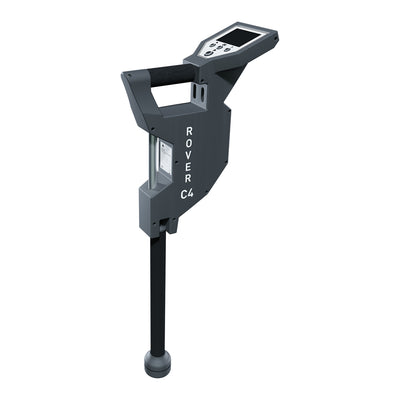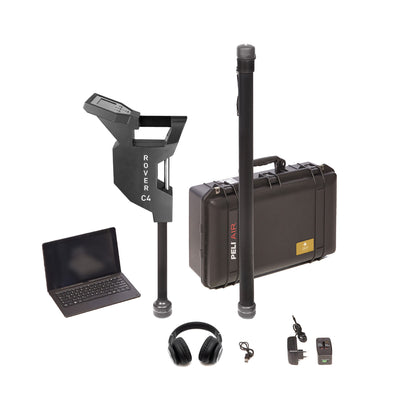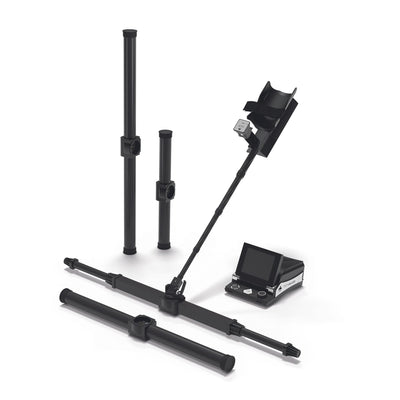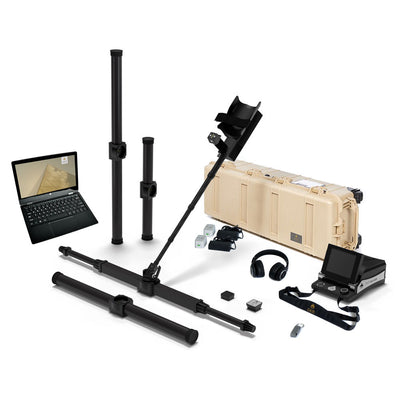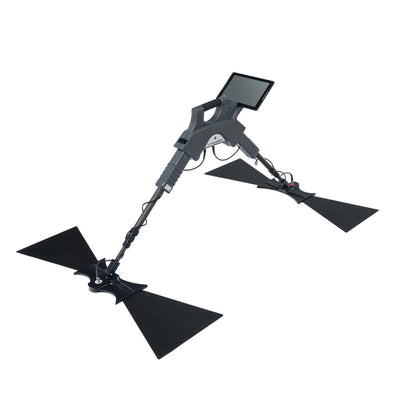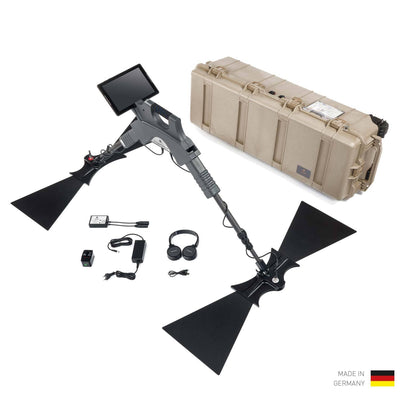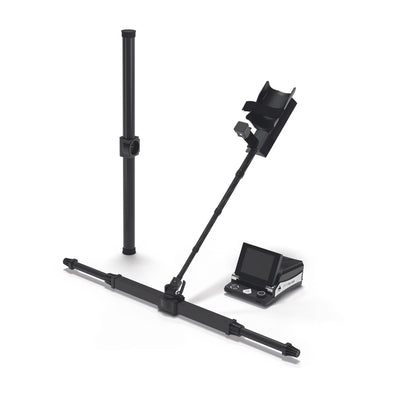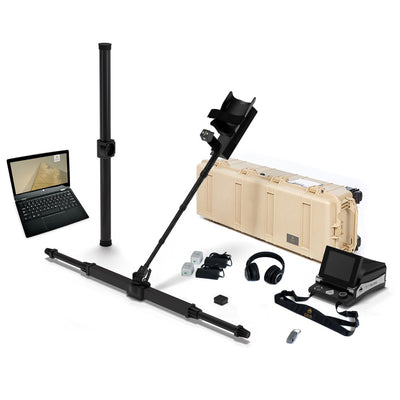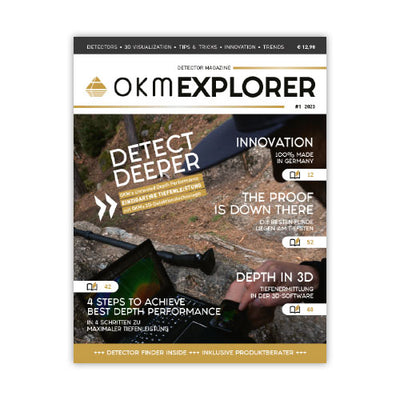How to make a Profitable Business out of the Hobby Treasure Hunting
There are several ways you can turn your hobby of treasure hunting and love of detection into not just a profession, but a real vocation. Do you already have experience in using metal detectors and a sense for finding hidden objects? Then now is exactly the right time to become self-employed with your hobby and earn money with your passion!
There is a wide variety of industries and business sectors that rely on the detection of metal objects and underground structures. These include not only the detection of buried precious metals or historical objects, as it is typical for treasure hunters and archaeologists, but also industrial services such as locating utility lines and contaminated sites, as well as private concerns such as the retrieval of lost keys and wedding rings. All of these issues and more can be part of a professional searcher's duties.
The following industries and application areas could be among the potential customers of your new business model:
- Archaeology, preservation of historical monuments and historical societies
- Well construction and drinking water supply
- Infrastructure development and civil engineering
- Ordnance disposal
People have always lost or purposefully buried things to protect them from others. Many of these objects are simply "forgotten" in the ground and cannot be found after a short time. After many years you come to a place you haven't visited for a long time and you have to realize how much everything has changed:
- Old buildings are torn down and new modern constructions are built,
- Forests, meadows and gardens become overgrown and trees grow into the sky,
- natural forces such as rain, snow and storms change the landscape.

Human memory also diminishes over time and it is difficult to tell where something was once buried. In the case of longer periods spanning several centuries, this is compounded by unclear lore, faulty records, and vague descriptions. There is not always the "famous" treasure map, on which the treasure is marked with a large X.
As you can see, there are countless difficulties that make finding lost and hidden objects difficult. At this point, the professional searcher is hired, who with the right know-how and the appropriate equipment will search for the treasure, the historical settlement or the buried pipelines.
Professional Equipment and Thorough Research: The Basis for Your Success
One of the most important prerequisites for the success of your new business model is, of course, the choice of the right equipment. For this purpose, we at OKM offer you a wide variety of detectors for the most diverse applications. Our trained staff will advise you honestly, accurately and competently so that you get the perfect equipment for the tasks you need to perform. Our detectors are available for the following areas of application, among others:
- Detection of ancient treasures and historical artiacts
- Locating underground tunnels and cavities
- Localization of natural mineral deposits
- Detection of hidden pipelines and supply systems
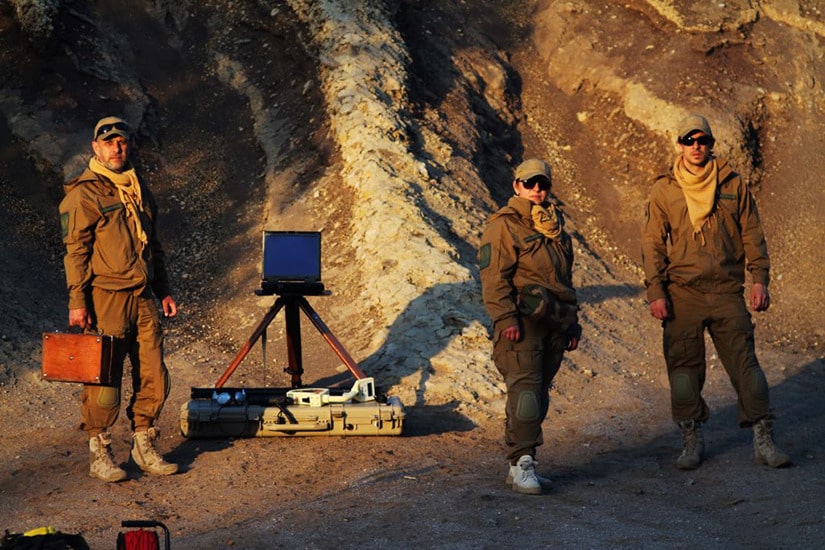

However, the best detectors are of no use to you if you are searching in places where nothing is buried. Every treasure hunter and prospector hopes for the big find when they're out with their metal detector once again. However, very few are rewarded with the find of a lifetime. Many of the largest and most significant treasure finds have been made mostly by accident, such as during excavation work at construction sites.
So, to be successful in your new business and satisfy your customers, you not only need to own good metal detectors, ground scanners and similar locating equipment, but also know WHERE and HOW to best use the technical devices.
As one of the most effective fortification systems during World War II, the Arpad Line and its bunker complex endured numerous offensives. More than half a century later, the expert ...
Read more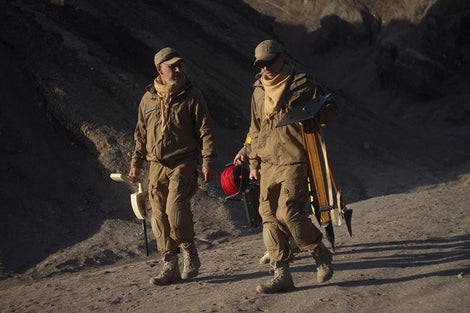
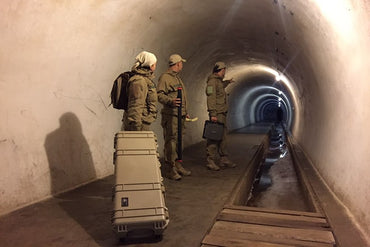
Potential Industries and Business Areas: Your New Business Model
In the following sections, we will introduce you to individual industries and business sectors in more detail, point out potential search opportunities and name the detectors that we believe are suitable.
If you are thinking of positioning yourself in the field of detecting underground objects and structures, contact us! We will be happy to support you in the implementation of your business idea and advise you on the selection of suitable equipment. In addition, we can of course offer you professional training on how to use your detector and in-depth background knowledge on how to analyze the measurement results.


Archaeology and Professional Treasure Hunting
One of the most famous archaeologists and treasure hunters is certainly "Indiana Jones", even if he is only a fictional movie character. In reality, however, the hunt for treasures and historical shrines is not quite as adventurous as in the film.
The typical tasks of archaeologists and treasure hunters include the following activities:
- Locating settlements and burial sites
- Investigation of historical battlefields
- Locating and recovering ancient artifacts
- Chronological classification of the finds
- Documentation of the sites and objects found

Without special knowledge of the past, the search for ancient finds becomes a pure game of chance. Thus, a large part of the treasure hunt or archaeological processing begins with extensive research work in libraries, archives and museums. The better you know the historical events and can place them in history, the more likely you are to draw conclusions about hiding places, burial sites and treasure troves. Or would you think of looking for the tomb of Alexander the Great in America?
After completing your thorough research and narrowing down your search area, you can divide the terrain into sections and systematically search them with a suitable metal detector or 3D ground scanner. The measurement data obtained in the process will be carefully saved and will also serve to document the finds at a later date.
During investigations at a bunker complex in Poland, the Stowarzyszenie Templum team detected a World War II bomb with OKM ground scanner Rover C4.
Discover Rover C4
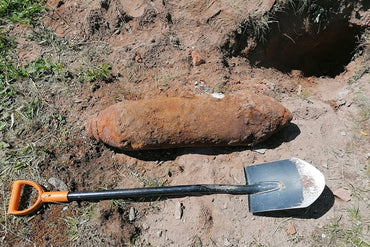
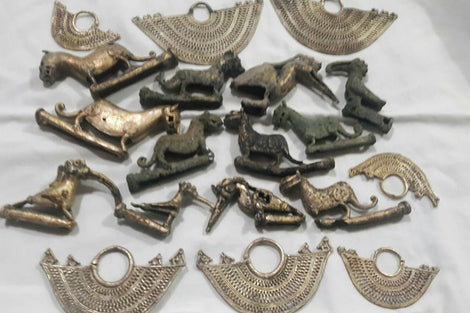
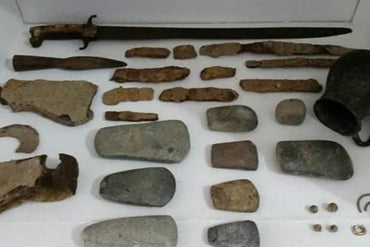
These artifacts and jewelry were found with OKM Evolution in 3.2 m (10.5 ft) depth. The discovery also comprises Spanish ammunition and old coins.
Discover Evolution NTXOKM's ground scanner eXp 6000 Professional Plus supports the Oak Island treasure hunters in finding new evidence about the legendary Money Pit.
Read more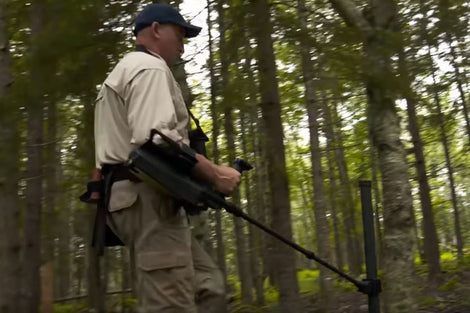
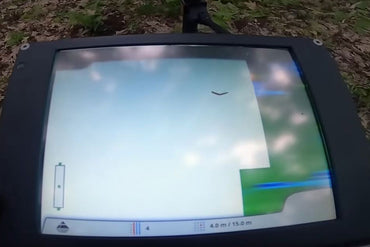
Decide for yourself whether you only offer services for the search for underground objects or whether you also want to actively support and carry out excavations. In the latter case, you should be aware that each country has enacted different rules and laws that determine what is allowed and what is not.
Contact archaeological institutes, historical societies or museums to offer your services.
Well Construction and Drinking Water Supply
One of the most precious commodities on our planet is drinking water. What good is all the gold in the world if people die of thirst? In many countries and regions there is a lack of sufficient water and the advancing climate change does not make the situation any better. So why not invest in the search for water and participate with outstanding technology and innovative ideas in locating underground springs and watercourses?

As in the search for buried treasures and artifacts, the search for water is preceded by intensive research work. The following aspects can already shed light on the success of your search for water:
- the geological composition of the soil
- climatic conditions and local weather phenomena
- plant growth and resident fauna.
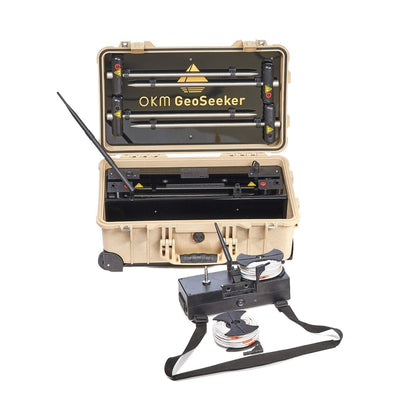
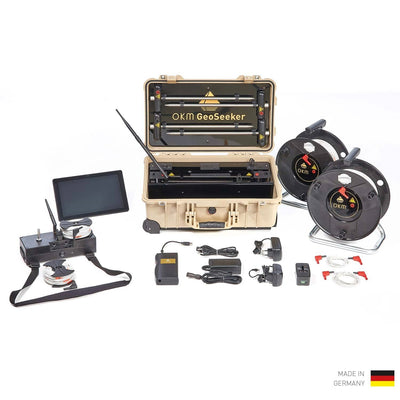
OKM GeoSeeker
Water Detector down to 250m (820 ft)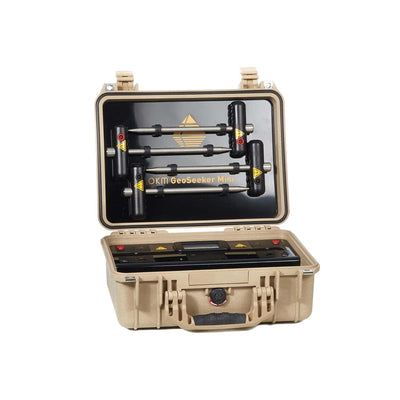
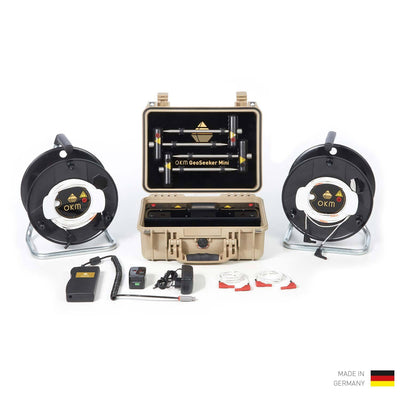
OKM GeoSeeker Mini
Water Detector for depths down to 100 m (328 ft)Consult local people and geologists active in the area before taking geoelectrical measurements. With appropriate measurement technology, you can minimize expensive drilling and specifically detect potential water deposits.
Land Development and Civil Engineering
If you want to excavate and move soil, you should always take care not to damage any existing utility lines, manholes or structures. The most dangerous objects in the soil are still unexploded ordnance, mines and bombs from wars and conflicts. One is therefore well advised to make appropriate preliminary investigations before any intervention in the ground.
Often, existing construction plans are incomplete and laid pipelines are incorrectly documented. Sometimes archaeologists and historians are interested in the site, if previous research indicates significant historical discoveries. Fabulous treasure finds have often been made on construction sites where no one would have expected them.
The following objects and structures can cause the cost and duration of a construction project to skyrocket if they cannot be identified in advance and safely avoided:
- Unexploded ordnance and other dangerous contaminated sites
- Historical and archaeological finds
- Cavities, tunnels and unstable subsoils
- Pipelines, shafts and other utility lines
Use your geophysical locating equipment and knowledge to target and document subsurface hazards and obstructions. Prior research in public works departments, public utilities, and city histories will help you identify known problems and better prepare for surveys.
